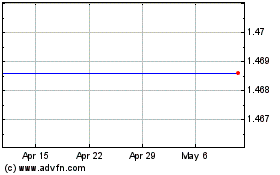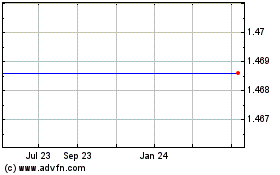GOOD EARNINGS FROM HIGH HARVEST
VOLUME
In Q3 2017, Lerøy Seafood Group
(LSG) reported operating profit before fair value adjustment
related to biological assets of NOK 861 million in Q3 2017,
compared with NOK 481 million in Q3 2016. This corresponds to
operating profit before fair value adjustment related to biological
assets for Q3 2017 of NOK 17.4 per kg against NOK 14.8 per kg in Q3
2016.
-
We have achieved the highest revenue and the
highest operating profit ever to be reported by the Group in a
third quarter, confirms CEO Henning Beltestad. We are pleased with
such a good result, but there still remains plenty of room for
improvement and this is where our focus lies," he continues.
The Group reported revenue of NOK
4,373 million in Q3 2017, compared with NOK 4,268 million in the
same period in 2016. The Farming segment harvested a total of
46,000 tonnes gutted weight of salmon and trout in Q3 2017, up 45%
from the same period in 2016. The Group's profit before tax and
fair value adjustment related to biological assets was NOK 899
million in Q3 2017, compared with NOK 534 million in Q3 2016.
The Group reported revenue of NOK
14,057 million as of the third quarter 2017, an increase of 14% on
the equivalent period last year. Operating profit before fair value
adjustment related to biological assets was NOK 2,939 million as of
Q3 2017, compared with NOK 1,826 million as of Q3 2016. The profit
before tax and fair value adjustment related to biological assets
as of Q3 2017 was NOK 3,033 million, compared with NOK 1,901
million for the same period last year.
At 30 September 2017, net
interest-bearing debt was NOK 2,733 million and the equity ratio
was 57%.
THE WILD CATCH AND WHITEFISH
SEGMENT
In October 2016, Lerøy Seafood
Group obtained 100% ownership of both Havfisk ASA (Havfisk) and
Norway Seafoods Group AS (now Lerøy Norway Seafoods - LNWS). As a
result of this transaction, both companies were consolidated into
Lerøy Seafood Group as of 1 September 2016 and these companies
comprise the Wild Catch and Whitefish segment.
Havfisk's primary business is wild
catches of whitefish. Havfisk has licence rights to harvest just
above 10% of the total Norwegian cod quotas in the zone north of 62
degrees latitude, corresponding to more than 30% of the total quota
allocated to the trawler fleet.
Havfisk's total catch volume in Q3
2017 was 17,029 tonnes, compared with 17,189 tonnes in Q3 2016. The
catch volume in Q3 2017 comprised 7,662 tonnes of cod, 3,436 tonnes
of saithe and 2,464 tonnes of haddock. The catch distribution in Q3
2016 was 8,592 tonnes of cod, 3,445 tonnes of saithe and 977 tonnes
of haddock. When compared with Q3 2016, the prices for cod and
haddock were up 2% and 26% respectively, while the price for saithe
was down 26%. Remaining quotas for cod, haddock and saithe as of Q3
2017 are approximately 15,000 tonnes against approximately 12,000
tonnes in Q3 2016.
LNWS's primary business is
processing wild-caught whitefish. The company has use of eight
processing plants in Norway, five of which are leased from Havfisk.
LNWS is the largest purchaser of cod from the coastal fishing fleet
in Norway.
The total contribution to
operating profit made by these two companies in Q3 2017 was NOK 62
million.
-
"We are looking forward to generating lasting
values by developing the Wild Catch segment together with our
employees both on and offshore," confirms CEO Henning Beltestad.
"In order to succeed, we need good, predictable framework
conditions, based on a fundamental understanding of what is
required to create and sustain jobs and values," explains the CEO.
"I have faith that the Norwegian authorities recognise this, and
trust that they will now allow us to develop our business without
interruption in the years to come," says Henning
Beltestad.
THE FARMING
SEGMENT - HIGHER VOLUME AND A SEASONAL PRICE FALL
The Farming segment reported
operating profit before fair value adjustment related to biological
assets of NOK 715 million in Q3 2017, up from NOK 397 million in Q3
2016. As of Q3 2017, the harvest volume is 4% higher than in the
corresponding period in 2016. The Group currently expects the total
harvest volume in 2017 to be higher than in 2016. EBIT/kg increased
from NOK 12.5 per kg in Q3 2016 to NOK 15.5 per kg in Q3 2017.
In Q3 2017, Lerøy Aurora achieved
operational EBIT per kg of NOK 23.7. Lerøy Midt and Lerøy Sjøtroll
are reporting EBIT per kg of NOK 14.7 and NOK 8.5 respectively for
the same period.
-
"The lack of growth in production together with
a positive development in demand and the weaker Norwegian krone
have resulted in historically high prices for salmon," explains CEO
Henning Beltestad. "Throughout Q3 2017, a seasonal increase in
harvest volume in Norway has placed some pressure on the spot
prices for salmon and trout. Prices in the quarter have therefore
been on the decline," explains the CEO.
-
"The release from stock costs in Q3 2017 are in
total on par with those from Q2 2017. We have a positive
development in Central- and Northern Norway, but have been affected
by an acute situation for salmon in the county of Hordaland,"
continues Henning Beltestad. "During the last part of the third
quarter, some of our localities in Hordaland had difficulties that
required action, including early harvest. This had a negative
impact on profit in the quarter. By the start of Q4 2017, the
situation was back to normal but the incident will, all other
factors being equal, result in a somewhat lower volume at the end
of the year and the start of 2018," says Henning Beltestad.
THE VAP, SALES & DISTRIBUTION
SEGMENT (VAPS&D)
The VAPS&D segment reported
revenue in Q3 2017 of NOK 4,289 million, up 8% when compared with
the same period last year. Operating profit before fair value
adjustment related to biological assets was up from NOK 90 million
in Q3 2016 to NOK 111 million in Q3 2017. This provides an
operating margin before fair value adjustment related to biological
assets of 2.6% in Q3 2017.
MARKET AND OUTLOOK
The Norwegian fish farming
industry, including LSG, is in a transitional phase with
extraordinarily high direct and indirect costs, due to biological
challenges, political decisions and regulations. Since 2013/4, the
Group has made substantial investments in its own production of
cleaner fish. The Group can now report very positive results with
cleaner fish. However, as production and utilisation of cleaner
fish remain in the early stages, further improvements are expected.
The Group is also investing in other tools to optimise production,
These include a significant increase in capacity for mechanical
cleaning and fresh-water treatment in well boats. The challenge of
excessive treatment of fish has not yet been solved, but
developments in 2017 have been positive. This justifies an outlook
for further improvements in production as we go forward into 2018.
The significant, long-term investments made by the Group within
several parts of the value chain shall ensure global
competitiveness.
Developments within whitefish in
2017 have been positive, even though industrial development and
processing of whitefish in Norway remain difficult. This situation
is impacted by political framework conditions, but the Group has a
clear ambition to increase competitiveness in and earnings from
whitefish, with the prevailing conditions and by means of improved
marketing and improvements to operational efficiency.
In 2017, the Group expects to
harvest 176,000 GWT of salmon and trout, including its share of
LSG's volume from associates and a catch volume of whitefish up
towards 70,000 tonnes.
The Group currently estimates a
total harvest volume for salmon and trout of approximately 180,500
GWT for 2018, including the share of LSG's volume from
associates.
On 12 October 2017, the
Norwegian-Russian fisheries commission stipulated total whitefish
quotas for cod, haddock, Greenland halibut and redfish for 2018.
The total quota for cod is down 13% and the reduction in quota for
haddock is 12%. The quotas for Greenland halibut and redfish,
however, are up 12.5% and just over 9% respectively. The advice
from the International Council for the Exploration of the Sea
(ICES) is for an increase of 15% for saithe north of 62 degrees
latitude, and a 7% increase for saithe in the North Sea. The final
quotas per vessel are stipulated in November and December 2017.
The Board currently estimates that
earnings in Q4 2017 will be on par with earnings in Q3 2017,
ensuring that the Group will achieve a record-high profit in
2017.
Questions and comments may be
addressed to the company's CEO, Henning Beltestad, or to the CFO,
Sjur S. Malm.
This information is subject of the disclosure
requirements pursuant to section 5-12 of the Norwegian Securities
Trading Act.
Q3 2017 Report
Q3 2017 Presentation
This
announcement is distributed by Nasdaq Corporate Solutions on behalf
of Nasdaq Corporate Solutions clients.
The issuer of this announcement warrants that they are solely
responsible for the content, accuracy and originality of the
information contained therein.
Source: Lerøy Seafood Group ASA via Globenewswire
Lake Shore Gold Corp Ordinary Shares (Canada) (delisted) (AMEX:LSG)
Historical Stock Chart
From Mar 2024 to Apr 2024

Lake Shore Gold Corp Ordinary Shares (Canada) (delisted) (AMEX:LSG)
Historical Stock Chart
From Apr 2023 to Apr 2024
